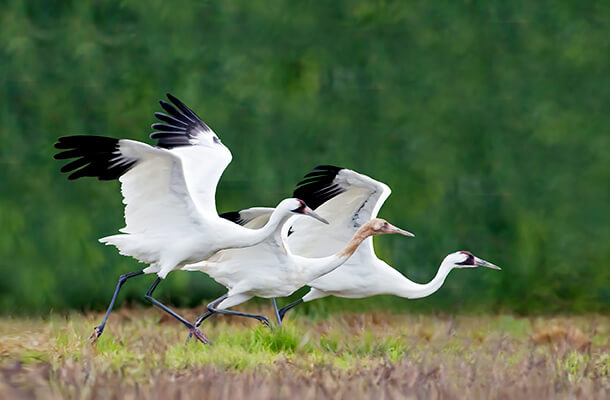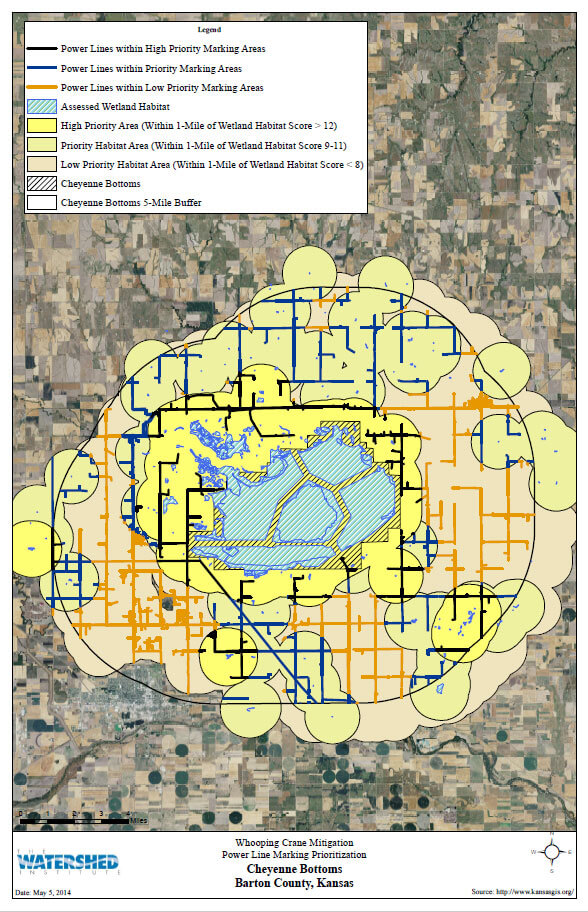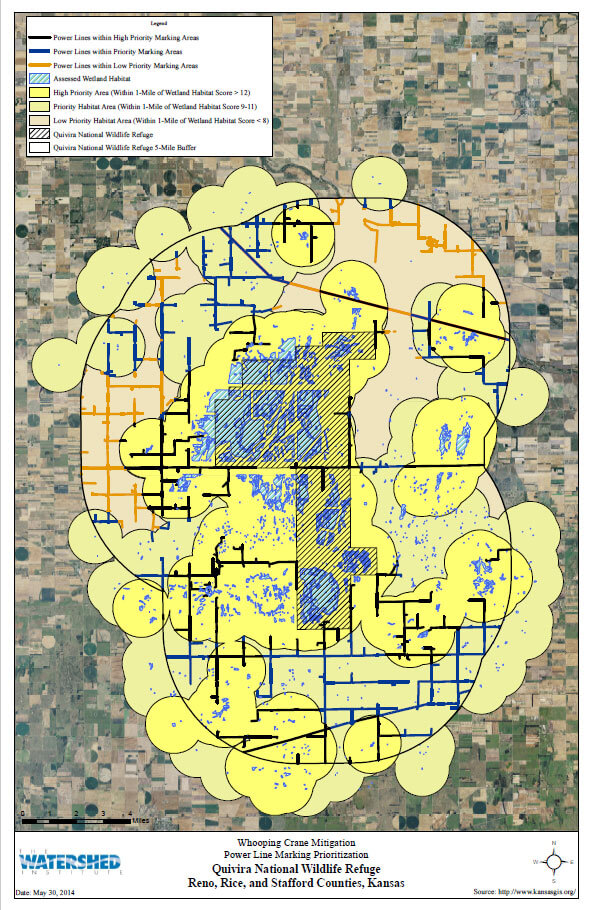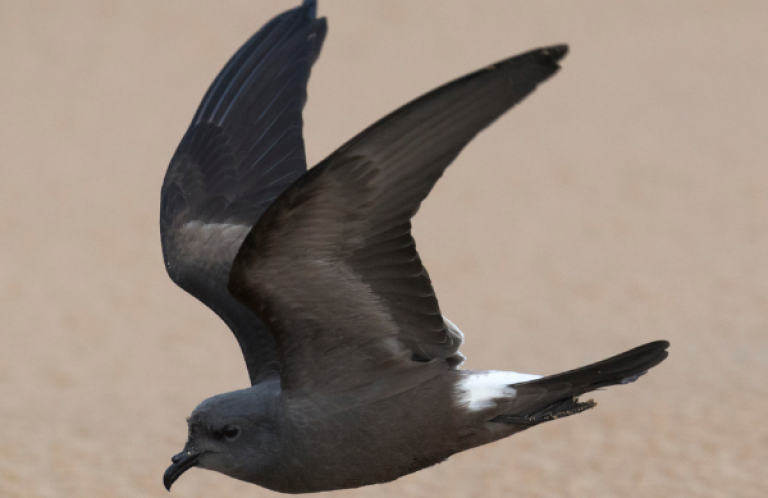Endangered Cranes Find an Ally in Kansas Utility Companies
Contact: Steve Holmer, Vice President for Policy, American Bird Conservancy. Phone: 202-888-7490 | Email: sholmer@abcbirds.org | Gina Penzig, Manager, Media Relations, KCP&L and Westar, Evergy Companies. Phone: 888-613-0003 | Email: gina.penzig@westarenergy.com

Whooping Crane family. The work to reduce the threat of colliding with powerlines is taking place in Kansas around the Quivira National Wildlife Refuge and Cheyenne Bottoms — important stopover areas between the species' wintering and breeding grounds. Photo by Richard Seeley/Shutterstock. (Other images available upon request.)
(Washington, D.C., August 23, 2018) Endangered Whooping Cranes are safer during their twice-yearly migratory journeys, thanks to years of effort by Kansas utility companies to identify and mark powerlines that pose the greatest risk to the birds. Although rare, collision with powerlines is the greatest known source of mortality for fledged Whooping Cranes.
“Whooping Cranes number only about 750 in the world, including more than 500 that migrate between Aransas Wildlife Refuge in Texas and their Canadian breeding grounds,” said Steve Holmer, Vice President of Policy at American Bird Conservancy. “We're grateful for the work by Westar Energy and other companies who are helping to make the Whooping Crane's long-distance journey safer and more likely to succeed.”
The work to reduce the threat of colliding with powerlines is taking place in Kansas around the Quivira National Wildlife Refuge and Cheyenne Bottoms — important stopover areas between the species' wintering and breeding grounds. These sites provide essential habitat allowing the birds to rest and refuel before continuing the 2,500-mile journey.
(See maps of powerline priority marking areas for Cheyenne Bottoms and Quivira, below.)
The Kansas Electric Utility Whooping Crane Conservation Plan and associated Advisory Group was formed in 2013 in response to line-marking guidance released by the U.S. Fish and Wildlife Service in 2010. Members of the Advisory Group include the Kansas Electric Power Cooperative; Kansas Biological Survey; Midwest Energy; Westar Energy; Kansas Department of Wildlife, Parks and Tourism; Kansas Ornithological Society; The Nature Conservancy; Sunflower Electric Power Corp.; and the U.S Fish and Wildlife Service (advisory).
Participating Kansas electrical utilities aimed to pool financial resources and collaborate to make the highest-risk lines safer for cranes, regardless of which company owned and operated the lines. All powerlines within 5 miles of Cheyenne Bottoms and Quivira were assessed for marking based on the surrounding landscape and documented habitat selection criteria often used by Whooping Cranes.
Using guidelines developed by the Avian Power Line Interaction Committee, various marker designs have been used in this effort. While most markers can be installed by hand, some require the use of helicopters to install these markers on transmission lines that are not accessible from the ground due to height and safety reasons.
“Since 2015, 160 miles of ‘high-priority' lines designated at Cheyenne Bottoms and Quivira have been marked,” said Eric Johnson, Biology Coordinator for Westar Energy. “By the end of 2019 all 113 miles of high-priority lines at Cheyenne Bottoms will be completed and 90 miles out of 130 will be marked at Quivira.”
"It has been very exciting to see how industry, regulators, and organizations come together to identify high priority areas that can then be addressed with line marking to help protect not only Whooping Cranes, but so many other species that can be at risk from line collisions," said Chuck Otte, Kansas Ornithological Society and member of the Advisory Group.
In addition, an American Bird Conservancy and International Crane Foundation Whooping Crane mapping study provided additional data, analyzing the distribution of wind turbines and associated powerlines and towers near stopover sites in the crane's migratory corridor. These intersections with powerlines will be reviewed by the companies for inclusion in line-marking efforts in the future.
Map: Powerline Priority Marking Areas for Cheyenne Bottoms

Map: Powerline Priority Marking Areas for Quivira

###
American Bird Conservancy is dedicated to conserving birds and their habitats throughout the Americas. With an emphasis on achieving results and working in partnership, we take on the greatest problems facing birds today, innovating and building on rapid advancements in science to halt extinctions, protect habitats, eliminate threats and build capacity for bird conservation. Find us on abcbirds.org, Facebook, Instagram, and Twitter (@abcbirds1).
The Avian Power Line Interaction Committee (APLIC) leads the electric utility industry in protecting avian resources while enhancing reliable energy delivery.
KCP&L and Westar Energy: Serving approximately 1.5 million customers in Kansas and Missouri, Kansas City Power & Light Company (KCP&L), KCP&L Greater Missouri Operations Company, and Westar Energy are the electric utilities of Evergy, Inc. (NYSE: EVRG). Together we generate nearly half the power we provide to homes and businesses with emission-free sources. We support our local communities where we live and work, and strive to meet the needs of customers through energy savings and innovative solutions.


















































